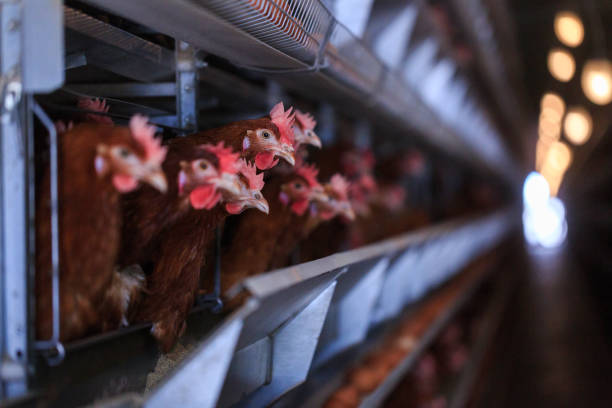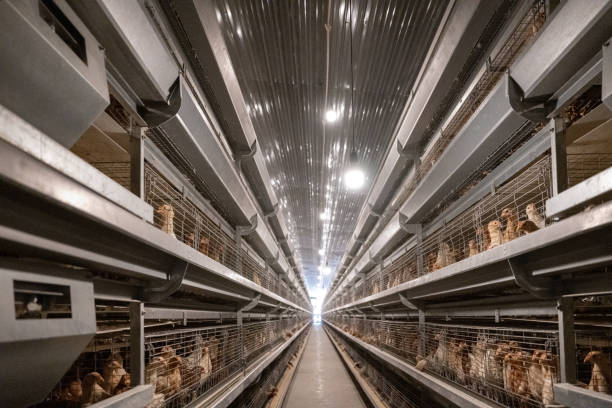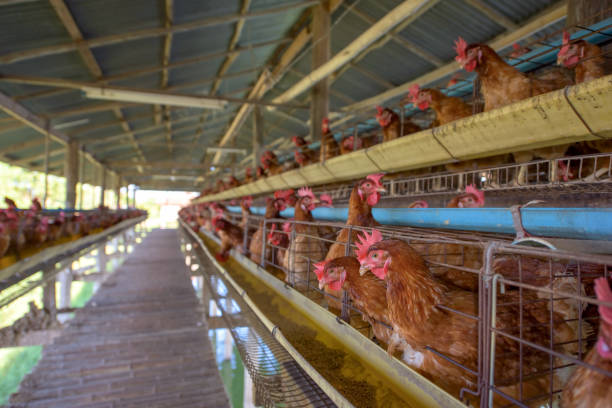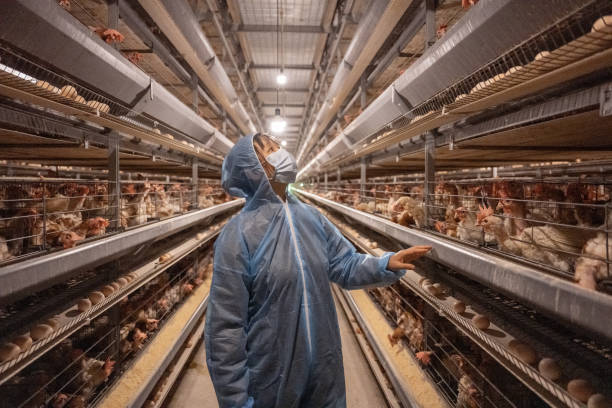
Layer Egg Farming Business Plan & Equipment Solution
Layer Egg Farming Business Plan & Equipment Solution
Starting a layer egg farming business can be a smart and profitable move, especially with the rising global demand for eggs. Whether you’re planning a small backyard setup or scaling up to an industrial-level poultry farm, having a solid business plan and the right equipment is key to long-term success. At Livi Machinery, we’ve helped hundreds of farmers across Asia, Africa, and Latin America build efficient, high-yield egg production systems. In this guide, we’ll walk you through what it takes to launch and run a successful layer egg farm—from initial planning to choosing modern automated equipment that boosts productivity and cuts labor costs.
Setting Up Your Layer Farm: Key Planning Steps
Before you buy a single hen or piece of equipment, you need a clear roadmap. Start by defining your scale. Are you aiming for 5,000 birds or 50,000? Your production goals will affect everything from land size and building design to feed supply and waste management. Next, choose the right location. Look for a site with good ventilation, access to clean water, and minimal noise or disturbance—chickens thrive in stable environments. Make sure local regulations allow poultry farming and check if permits are required.
Now, let’s talk about breeds. For commercial layer egg production, most farmers go with hybrids like Hy-Line Brown, ISA Brown, or H&N Nick. These breeds are bred specifically for high egg output—they can lay over 300 eggs per year! Pair them with high-quality feed and a consistent lighting schedule (around 14–16 hours of light daily), and you’ll see great results. Don’t forget vaccinations and biosecurity protocols. A disease outbreak can ruin months of work, so invest in footbaths, rodent control, and regular health checks. And always have a vet on call.
Another often overlooked part of planning is understanding your market. Who are you selling to? Local markets, supermarkets, or egg processors? Knowing your buyer helps you decide on packaging, branding, and logistics. You may even consider adding value—like selling boiled eggs, egg powder, or partnering with bakeries. The clearer your sales strategy, the faster you’ll break even and start making profits.
Smart Equipment Choices That Pay Off
Once your business plan is ready, it’s time to set up your farm with durable, efficient equipment. This is where automation makes all the difference. Older farms rely on manual feeding, watering, and egg collection—but those methods waste time and reduce consistency. Today’s smart layer farms use automated systems that save labor, improve hygiene, and increase egg yield.
Take the cage system, for example. Modern layer cages are designed with sloped mesh floors that let eggs roll gently into collection trays—this prevents breakage and keeps eggs clean. Multi-tier systems make the best use of vertical space, letting you raise more birds without expanding your shed footprint. We offer A-frame, H-type, and ladder-style cages, each suited to different farm layouts and bird counts. All our cages are made from galvanized steel, which resists rust and lasts over 15 years, even in humid climates.

Feeding is another area where automation shines. Our automatic chain feeding systems run on timers, delivering precise amounts of feed at set times every day. No more under-feeding or overfeeding—your hens get exactly what they need, when they need it. Water lines are just as important. We install nipple drinker systems that keep water fresh, minimize spillage, and stop contamination. Clean water leads to healthier chickens and better egg production.
And let’s not forget eggs. Instead of hand-collecting, many of our customers use egg belt systems. Eggs travel on soft rubber belts directly to packing tables, reducing cracks and saving hours of labor. If you’re running a large farm, pairing this with a grading machine can sort eggs by weight automatically—perfect for supplying supermarkets or export partners. Temperature and ventilation are also part of the equation. Tunnel ventilation, cooling pads, and automatic controllers keep your house at the ideal climate year-round, which matters especially in hot regions.
From Farm Design to Full Operation: How We Support You
At Livi Machinery, we don’t just sell equipment—we help you build a working business. It starts with a free consultation. Tell us your goals, location, and bird capacity, and we’ll design a custom layout for your poultry house. Need help selecting the right fan size or calculating feed line length? Our engineers will guide you every step of the way.
Then comes installation. We provide detailed assembly manuals, videos, and on-site technical support if needed. Whether you’re in Nigeria, Pakistan, or Peru, our team can assist remotely or send technicians to train your workers. After setup, we offer ongoing maintenance tips and spare parts supply to keep your system running smoothly for years.
But we go beyond hardware. Want to learn best practices in flock management or improve egg quality? We share training materials, seasonal care guides, and real-life case studies from farms we’ve worked with. Some of our customers increased their output by 20% just by adjusting lighting and feed schedules we recommended. That’s the power of combining smart equipment with expert knowledge.
Why wait? A well-planned layer farm with modern equipment isn’t just profitable—it’s sustainable and scalable. With growing populations and steady egg consumption worldwide, now is the perfect time to invest. Whether you’re starting from scratch or upgrading an existing farm, we have the tools and experience to make it happen.
Ready to bring your egg farming dreams to life? Drop us a message with your project details—farm size, location, and target production—and we’ll send you a complete quote and layout within 24 hours. Let’s build a smarter, more productive farm together.
Frequently Asked Questions
What is the best breed for layer egg farming?
Hybrid breeds like Hy-Line Brown and ISA Brown are top choices because of their high egg production, disease resistance, and adaptability. They usually start laying at 18–20 weeks and can produce over 300 eggs annually under good conditions.
How much space do I need for 10,000 laying hens?
For cage systems, each bird needs about 550–600 cm² of space. So, 10,000 hens would require roughly 600–700 square meters of indoor space, plus room for feed storage, egg packing, and utilities.
Can I automate a small-scale layer farm?
Absolutely. Even smaller farms benefit from basic automation like automatic drinkers and feeders. As your operation grows, you can add egg belts and climate control systems gradually.
How does automation reduce labor costs?

An automated system can cut labor needs by 50–70%. Tasks like feeding, watering, and egg collection, which once took several workers full time, can be managed by one or two people with the right setup.
What kind of maintenance does layer farming equipment need?
Routine checks on feed lines, water nozzles, and belts are essential. Clean components monthly, replace worn parts promptly, and inspect electrical systems regularly. Galvanized cages need little maintenance but should be inspected annually for structural issues.
How long do layer cages last?
High-quality galvanized steel cages, like those we provide, can last 15 years or more with proper care—even in tough climates. Avoid using strong chemical cleaners that could damage the coating.
Is it worth investing in climate control systems?
Definitely. Stable temperature and airflow prevent heat stress, which directly impacts egg production and shell quality. Cooling pads and tunnel fans pay for themselves in improved yields, especially in hot seasons.
How soon can a new layer farm become profitable?

Most well-managed farms break even within 12–18 months. Profitability depends on feed cost, egg prices, and how efficiently you manage labor and mortality rates.
Do you offer installation support overseas?
Yes, we provide remote guidance with videos and diagrams. For larger projects, we can arrange on-site technician visits depending on your country and order size.
Can I expand my farm later?
Most of our systems are modular, meaning you can easily add more cages, feeders, or egg belts as your business grows. Just let us know your future plans during the initial design phase.
